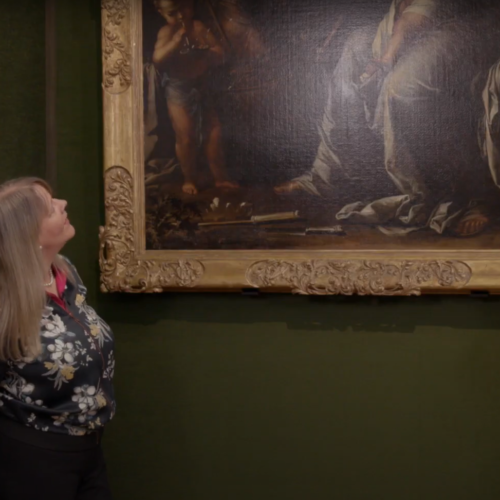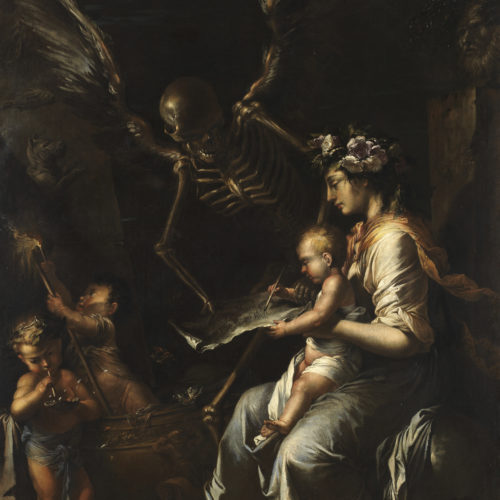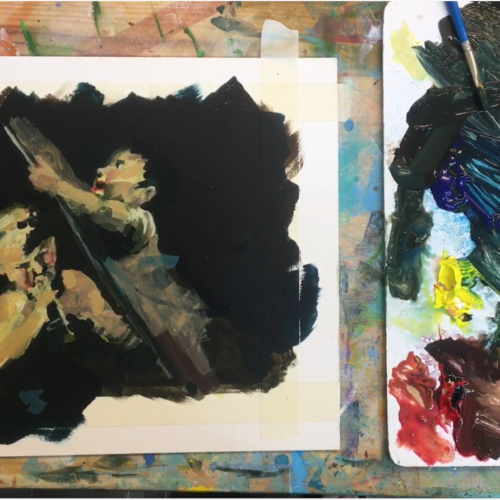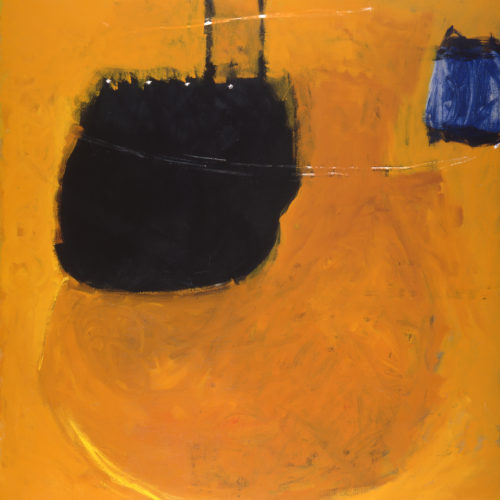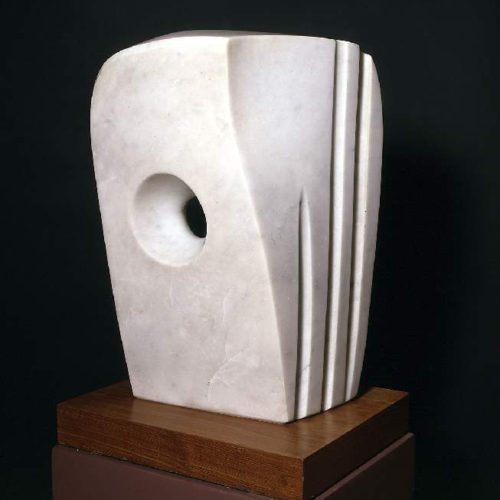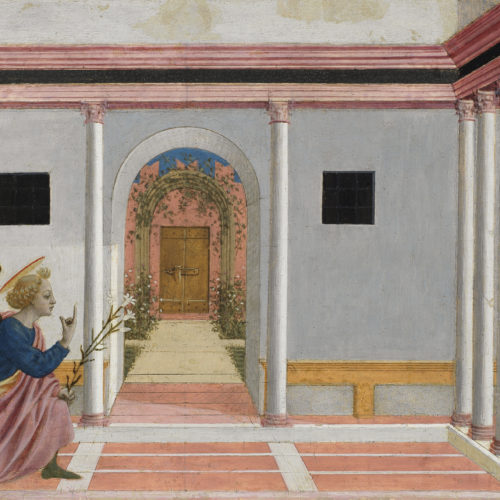- Sustained investigation of an artwork.
- Understanding composition, perspective, symbolism and artist narratives.
- Learning technical language and communicating appropriate responses.
- Reflecting on reasoned understandings of cultural context and historical timeframes, and cultural, moral, spiritual context.
- Reflecting on how this artwork inspires students’ own artwork.
Each resource provides a set of learning materials to support these elements:
- Close Encounter: critically examine
- Discuss: think and discuss ideas
- Create: develop their own artwork through artist-led virtual workshops
- Reflect: reflect and evaluate their work
In 1655 a devastating plague swept Naples. Salvator Rosa’s son, Rosalvo, his brother, his sister, her husband and five of their children, all died. The transience of human life was a recurring theme in 17th-century painting and thought, but for Rosa, in the year he made this painting, the subject had
a tragic immediacy. A letter to his friend Ricciardi makes clear the effect this multiple bereavement had upon him:
“This time heaven has struck me in such a way
that shows me that all human remedies are
useless and the least pain I feel is when I tell
you that I weep as I write.”
References to antiquity, colours and palettes, symbols and composition.
Find out more about ‘Human Frailty‘ with this factsheet.
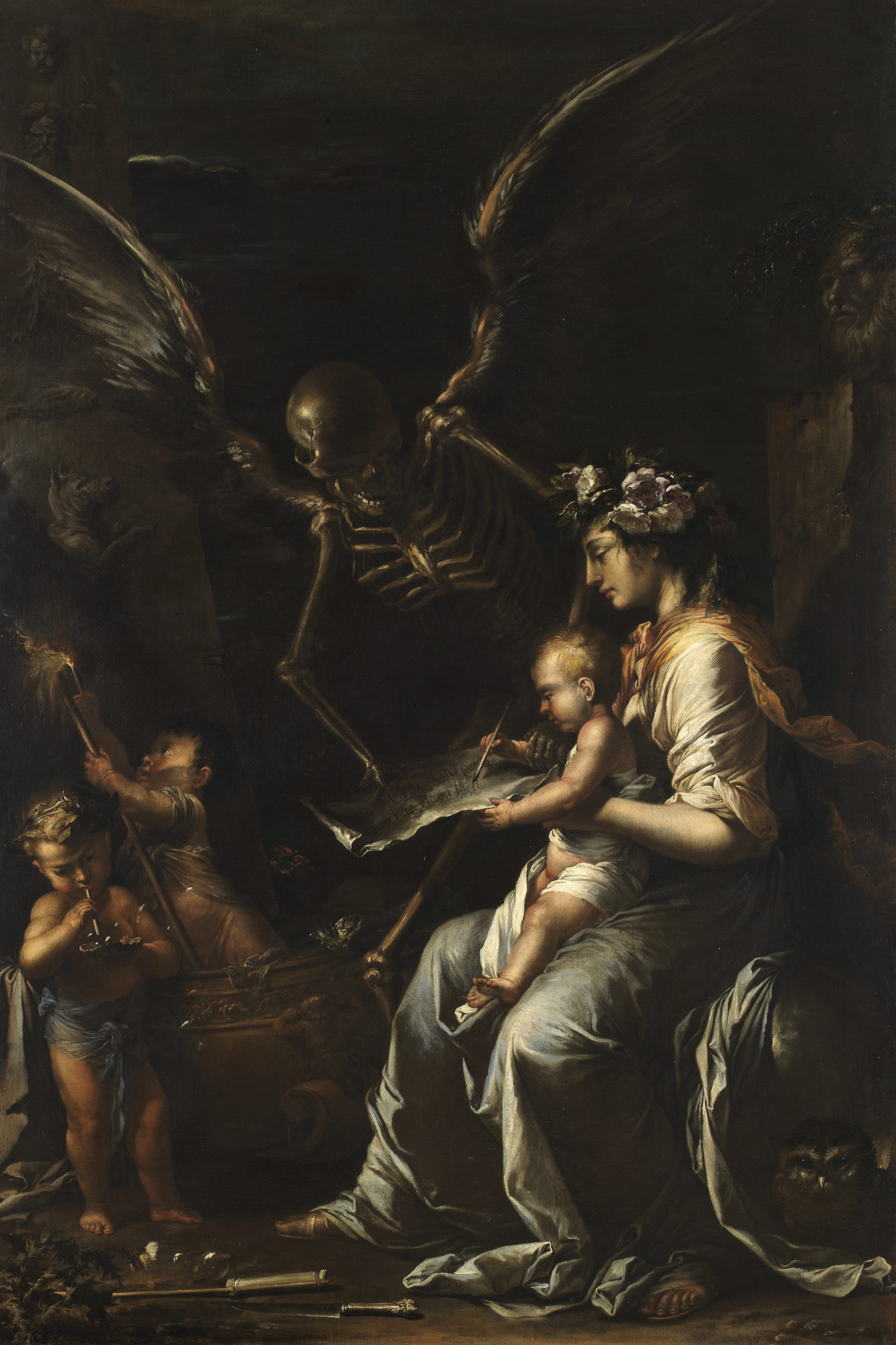
Let’s start by thinking about the physical size of this painting: height 199.1cm x width 133.1cm.
Your first challenge is to find something this size in your classroom or at home! You’ll need a long tape measure…
This painting is almost exactly the same size as a double bed, wardrobe or large cupboard.
Imagine or act out the pose in the same position as the woman or skeleton in this painting. You can use friends to help you – this can help you work out the scale. It might help if you take a ‘selfie’ when you are in position. When a painting of this size includes people, we can think about scale – if they are life size, smaller or larger?
Now measure a wall in your own classroom or home. Imagine the size of the room that a painting this size could hang in – what sort of house might have rooms that size? What does that tell us about where this painting might have originally been displayed and the status of the owners?
Ask the artist
In a pair, one of you is an art journalist; the other is Salvator Rosa. Devise a set of questions to find out more about the painting.
Here’s a question to get you started: “Signor Salvator, tell us, who is that mysterious lady and why is she so sad?”
How do you think the artist, Salvator Rosa, would answer?
Find it, list it
As a class make a list of as many actual ‘things’ you can find in the painting. Aim to list around 15 ‘things’. We’ll start you off: a bubble.
Look very closely into the background of the painting. Did you find a fish? An old man’s face? A hippo?
Turn your attention to the foreground, the ‘front’ of the painting. Did you find a knife? A bubble? A spent firework?
Why do you think the artist, Salvator Rosa, included these in his painting? These act as a code called symbolism – when an object stands for something else. Can you decode the symbols?
- Fish: think about what an old dead fish might smell like.
- Face of an old man: he is the Roman god Terminus, the god of endings.
- Hippo: often a dangerous and unpredictable animal.
- Bubbles and fireworks: how long does a firework illuminate the sky? How many seconds does a bubble float in the air? Can you capture these and keep them?
- Knife: which way is the blade facing? What could this knife symbolically cut apart?
- Owl: the companion animal to the ancient Roman goddess of wisdom, Minerva.
Colours and Symbols
Create a set of symbols to represent:
- chaos
- everlasting
- impermanence
- love
- hope
- life
Put together your own paint palette that matches this painting. You can mix colours together to create a range of tones and hues. Discover how to paint using a limited palette in this video with artist Nathan Huxtable:
Experiment with matching your colours and symbols.
Make a set of notes that reflect on the following:
- What is your initial emotional response to this painting? Then, think about whether your understanding of the artist’s personal story changed your emotional response? Do artworks always require an emotional response?
- How does understanding the symbols help us understand the story of this painting more deeply? How does the artist use colour to heighten the visual emotive response to the image?
- Which ancient historical era does the artist refer to and how does this relate to his own culture? Then, reflect on how this might influence our contemporary understanding?
- Which aspects of this painting might inspire and inform your own artworks and how can you expand these?
Download our How to Read a Painting scheme of work as a PDF.
This resource has been designed for teaching within your classroom and is not to be used for any other purposes without the express permission of the Fitzwilliam Museum.
Some of the artists featured are in copyright and have been included with the permission of the relevant rights holders.
The copyright in all the images remains the property of The Fitzwilliam Museum, University of Cambridge.
